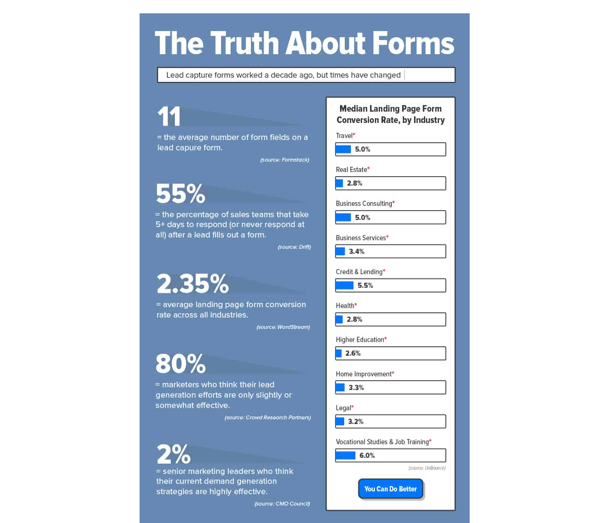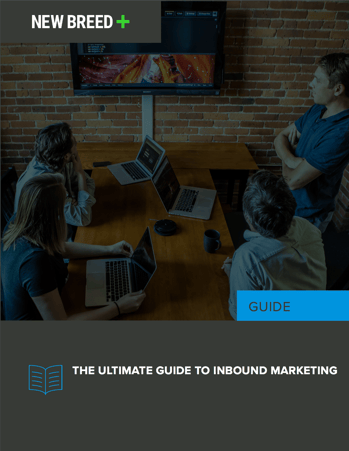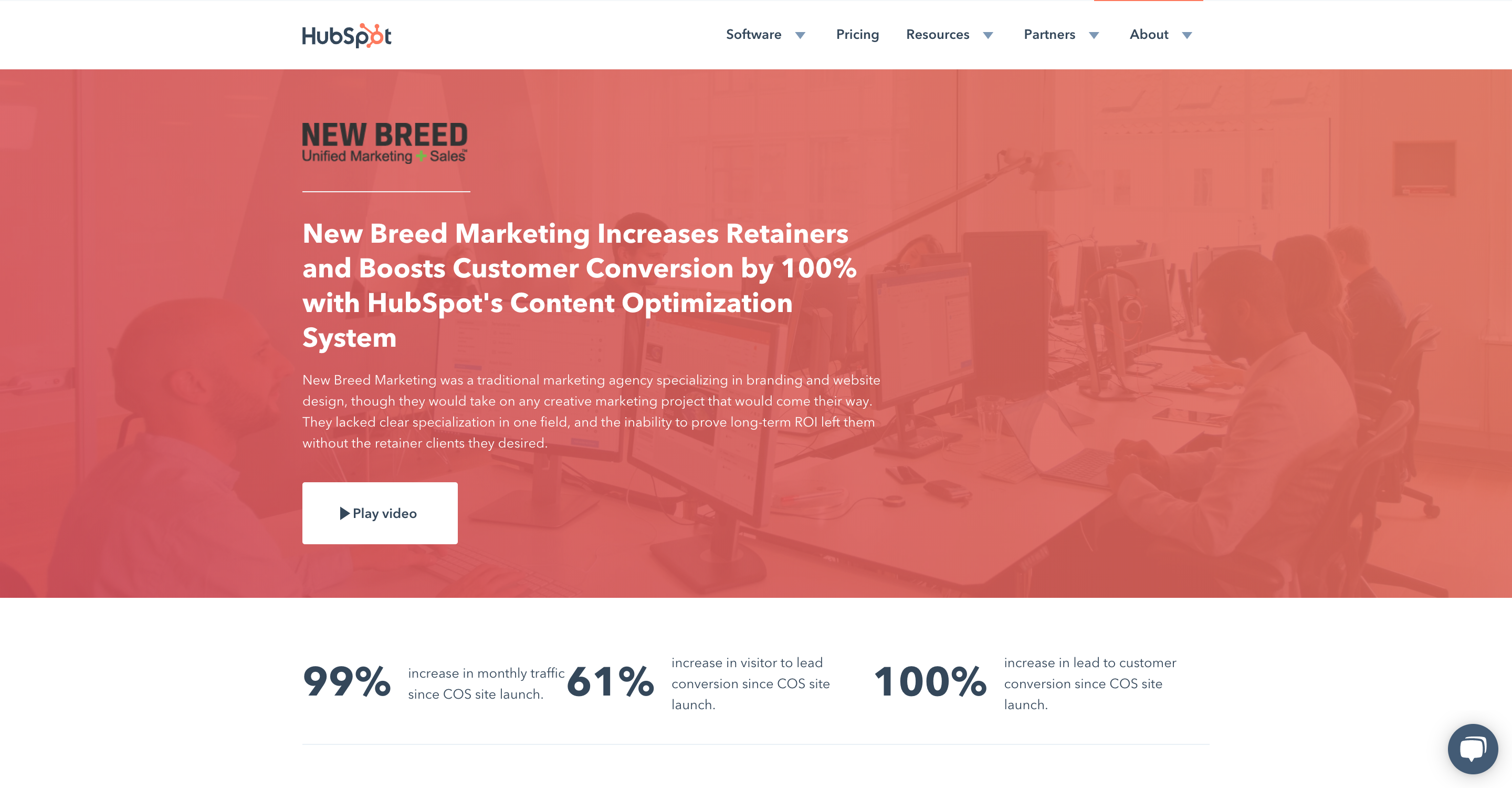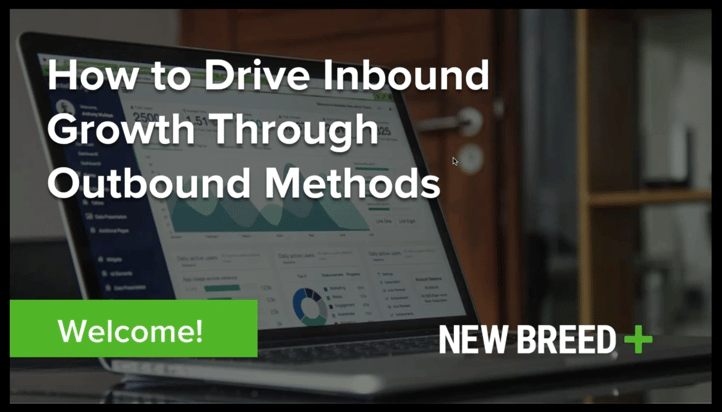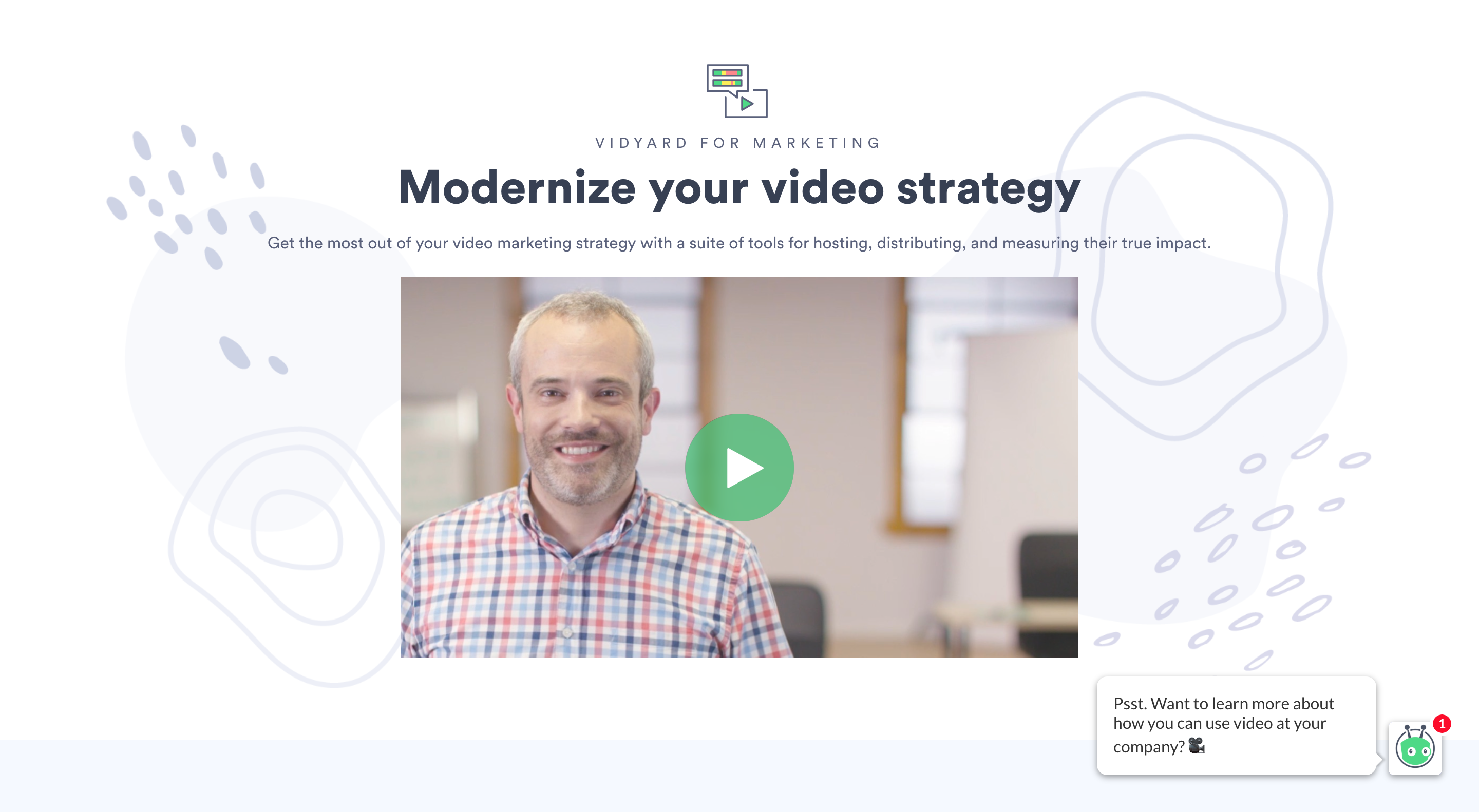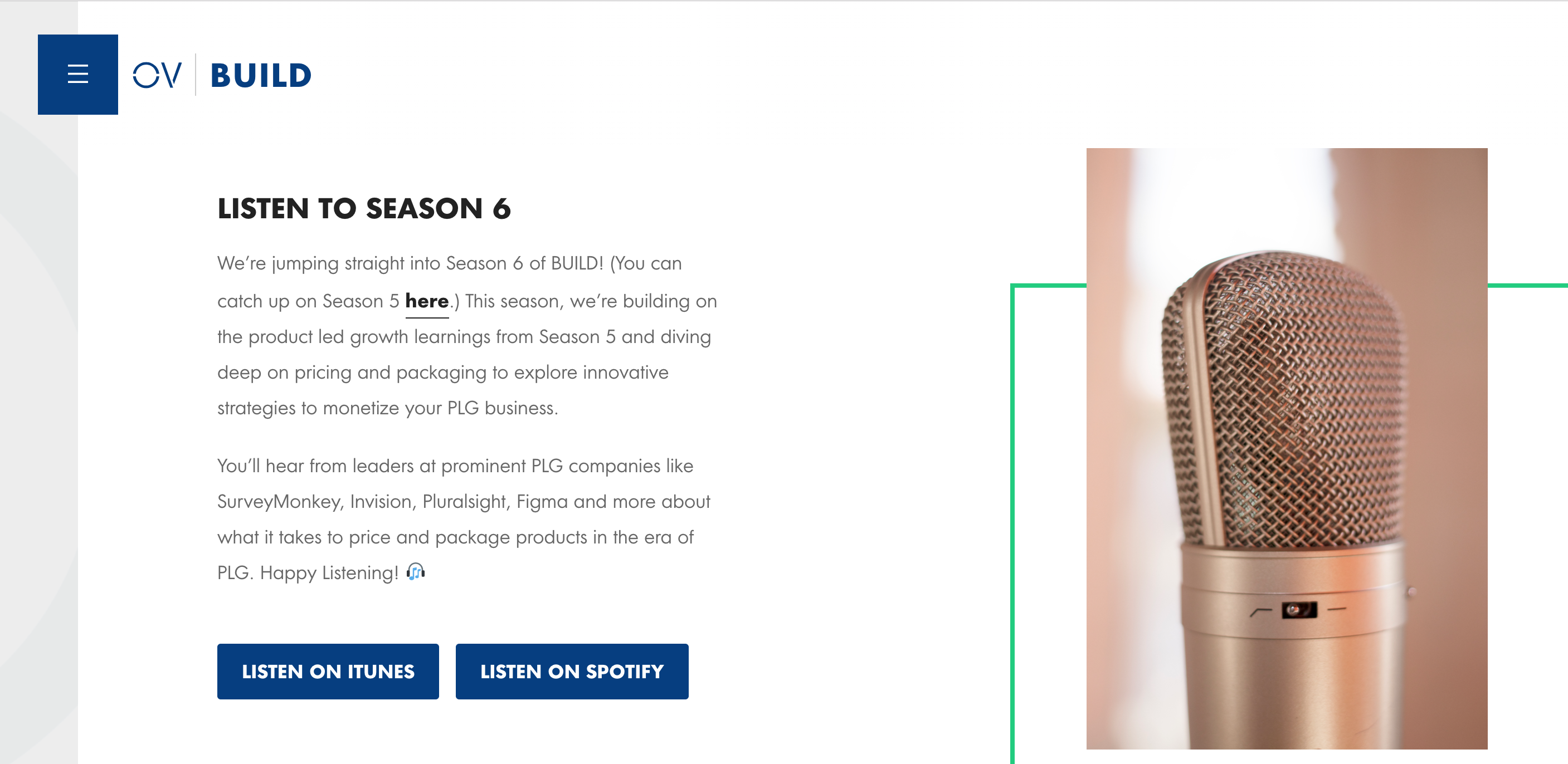7 Proven Inbound Marketing Examples You Should Try Today

The point of inbound marketing is to create and promote content to add value before extracting it.
Basically, inbound marketing strives to produce educational content so people can research on their own time. By receiving value with no strings attached, your audience will begin to trust you and eventually convert into customers.
With outbound, instead of “pulling” customers in by producing valuable, searchable content, you push content out, “promoting” it so it interrupts their habits and sticks your brand or product in their mind. While promoting content sounds contrary to this inbound ideology, promotion can be an inbound tactic when it’s motivated by the prospect’s needs. If people can’t see your content, how can they get value from it?
So, how can you provide value to your audience? Here are some strategies you should try today.
Blog posts
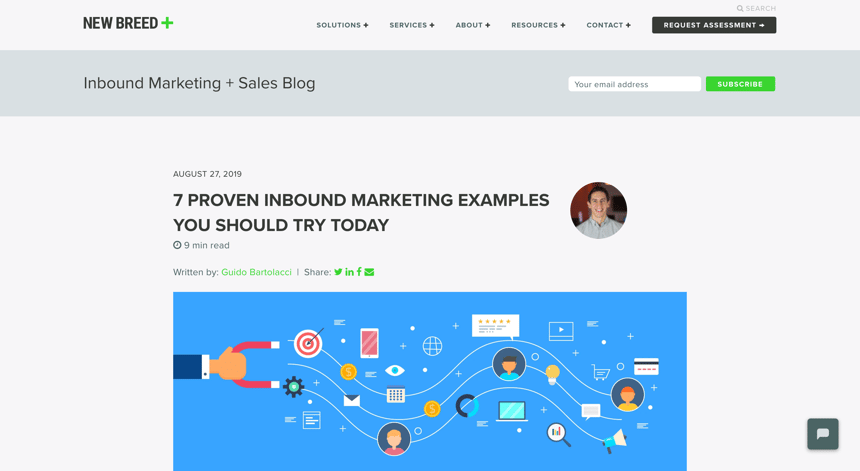
Blog posts are online articles presented by subject matter experts.
They have multiple purposes. First, you can use them to address buyer personas’ needs, helping individuals recognize they have a problem and consider potential solutions for it.
Second, blogs can be positioned to introduce longer, more valuable content offers. A blog is likely a consumer’s first touchpoint with your company, so they help your prospect address the topic they’re searching for information about while also point the prospect toward more in-depth resources that touch on how your company can help them with that topic.
For instance, in this blog, we’re helping you understand inbound marketing by presenting examples. The next step is for you to understand how to build strategies around these examples. Ideally, this content will prompt you to take the next step (e.g. downloading our Ultimate Guide to Inbound Marketing).
Third, blog posts should be searchable. Since they are meant to help attract prospects to your company, you should orient your titles around things your buyer personas are going to be searching for because that’s going to be the easiest way for them to find you.
Lastly, you should create a network of content through internal linking. Utilizing such a strategy will help you keep visitors on your site longer, because they will always have plenty of logical next steps in their journey. This can establish trust and position you as an authority.
Infographics
Infographics are images where information is illustrated in an easy-to-consume format. The example above is from Drift. We love it because the content is straight-forward and presented in a clever format.
Infographics are frequently used on social media. They provide a visual way to process content quickly, and they’re downloadable, so you can save them for later.
One strategy gaining popularity is to use infographics as blog summaries. Basically, for more dense topics, they are created as bite-sized resources to reinforce topics in a way that’s easier to understand.
Guides
While blogs cover the topics people are searching for and tend to be more specific, guides take a more comprehensive view. For instance, we have blogs like “How to Prove the ROI of Inbound Marketing” and “Why Social Media is Essential to Inbound Marketing.” While these posts are useful, they are only pieces of the inbound marketing puzzle. We created the Ultimate Guide to Inbound Marketing as an overarching resource that covers the topic in much more depth than a single blog could.
CTAs (calls-to-action), like the inline example below, can be used to guide your audience from blog posts to guides.
Since guides are inherently more valuable, they are normally gated, meaning readers must give up something, normally their information, in order to access the content.
From the marketer’s perspective, the point of a guide is threefold. First, guides should instruct readers on how to do something, or at least help them understand a concept, on their own. Second, they drive conversions, producing leads that you can begin to nurture. Finally, they should present a wealth of information so readers realize how challenging certain tasks are and seek your company’s help to accomplish them.
There are other pieces of content like ebooks and whitepapers that occupy a similar role in your conversion funnel.
Case Studies
Case studies are records of work you have done for clients and include the results generated on their behalf. Basically, they demonstrate your end solution can deliver upon the promises made in the marketing and sales process.
The example above is from HubSpot and details New Breed’s success once we started using their platform. It clearly demonstrates how they helped us at the top of the screen and provides a deeper explanation below.
Case studies are normally used later in the buying process and are primarily used to narrow consumers’ lists of purchasing options. They are great ways to differentiate yourself from competitors by demonstrating how you do things differently or better than competitors.
Webinars
The term webinar is a combination of the words “web” and “seminar.” They are essentially online events hosted by professionals who present on topics in their area of expertise. For example, we host webinars about a variety of topics related to B2B inbound marketing and sales, like the one shown above.
If webinars are scheduled for a specific date, you can generate urgency, prompting viewers to sign up. After the original broadcast, you can host webinars on your website like a guide, gating them so consumers must fill out a form to gain access.
Webinars and guides serve a similar purpose in the lead nurturing process. They allow you to demonstrate your expertise on a topic and bring in subject matter experts to position you as an authority.
Since they are presented via video, webinars are interactive. Hosts are able to respond to questions in real time and share their screens to demonstrate different processes. If you use them effectively, you can derive more value than presenting the same information in a static form.
Videos
Videos are used more and more frequently throughout the entire marketing process. They can primarily offer alternative ways to consume information (i.e. visual instead of written) or can supplement written content.
The example above is from Vidyard. We love it because it presents their value proposition in a succinct and relatable format.
Here are a few other examples of how videos are used to supplement and emphasize written content:
- Short videos are common on social media for bite-sized content that users can consume quickly
- Videos under five minutes supplement content on blogs (summarizing information in a similar way to the infographic strategy discussed earlier)
- Clips are included on landing pages to tease premium content offers
- Videos are embedded within guides to emphasize points or walk through a process
- Video testimonials featuring customers talking about their experience with a product or service can bolster or replace case studies.
Alternatively, video can be used later in the sales process and marketing can support with the creation of those assets as part of sales enablement. For instance, here at New Breed, we use Vidyard in our sales process to connect with people on a more personal level. By seeing a real person, we build consumer trust.
Sales create video walkthroughs of our deal proposals. Normally in the selling process, the sales team presents proposals to your champion — the person who wants to buy your product. Your champion must then go and garner internal buy-in from their company, talking to decision makers that sales might not get the chance to speak to.
In such a scenario, you’re relying on your champion to deliver your message. Alternatively, by walking through proposals via video, you enable your champion to carry your message to key stakeholders exactly as you want them to.
Podcasts
Podcasts are digital audio files where a subject matter expert has a conversation about their topic of expertise. For example, Openview’s Build podcast provides great insight into their area of expertise, scaling B2B SaaS companies, while providing easy listening.
Podcasts offer unique access to your contacts and customers. You need to be sitting at a computer to consume most of the content we’ve listed so far. With a podcast, that is not the case. An individual can listen while performing different tasks, like driving. With that in mind, podcasts should be light and entertaining.
The biggest drawback of podcasts is their inability to be easily tracked. However, they can be repurposed into trackable forms of content. For instance, once you have a recording, you can take that audio, recap it in a blog post and transcribe it so someone can download the transcript (garnering conversions). Off from one recording, you can produce the podcast, a blog and a content offer, maximizing efficiency.
Helping People Find Your Content
Once your content is created, you need to ensure it’s easy to find. This is accomplished in two ways: through connecting content and promoting content.
Connecting Content
When it comes to conversion funnels, it’s important that pieces of content connect to one another, so leads can be guided through each micro-conversion on their way to becoming customers. There are a number of ways to connect content. For instance:
- Conversational marketing uses chatbots to help contacts locate what they want (and what you intend for them to find) as quickly as possible
- CTAs can be both visual (like on a blog) or verbal (like in a podcast). They are commands used to prompt a response from your audience (e.g. “download now”)
- Landing pages are conversion points on your website. Traditional landing pages have a form that gates content. They also include descriptions of the offer
Promoting Content
Once your content is connected, you need to promote it. There are a number of ways to do that, including:
- Optimizing content for search
- Boosting content that’s either not optimized for organic search or not intended to be found through organic with paid advertising
- Posting content on social media
- Serving people similar content to what they’ve previously visited on your site through retargeting
- Nurturing leads via email.
Key Takeaway
Inbound marketing is designed to cast a wide net, have longevity and diversify risk. You should be comfortable having people who read your blog, download your e-books and never become customers. While it’s not ideal, it will happen. In using inbound methods, though, that same content will be available to facilitate different conversions.
Alternatively, outbound methods are narrow, short-lived and not diversified. For instance, if you’re making cold calls, you can only talk to one person at a time, and, once the call is over, it’s over. If the individual didn’t convert, you have to muster a new effort, making a new call and trying again.
While inbound is continually evolving as tactics are added (both podcasts and chatbots are new additions), it remains tried and true. It’s consistently proven to be effective in the long run.
To learn more about how to leverage inbound marketing in your business, check out our Ultimate Guide to Inbound Marketing by clicking the CTA below:
Guido Bartolacci
Guido is Head of Product and Growth Strategy for New Breed. He specializes in running in-depth demand generation programs internally while assisting account managers in running them for our clients.


